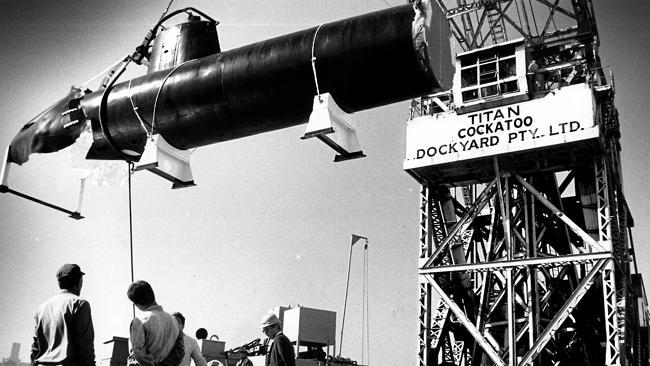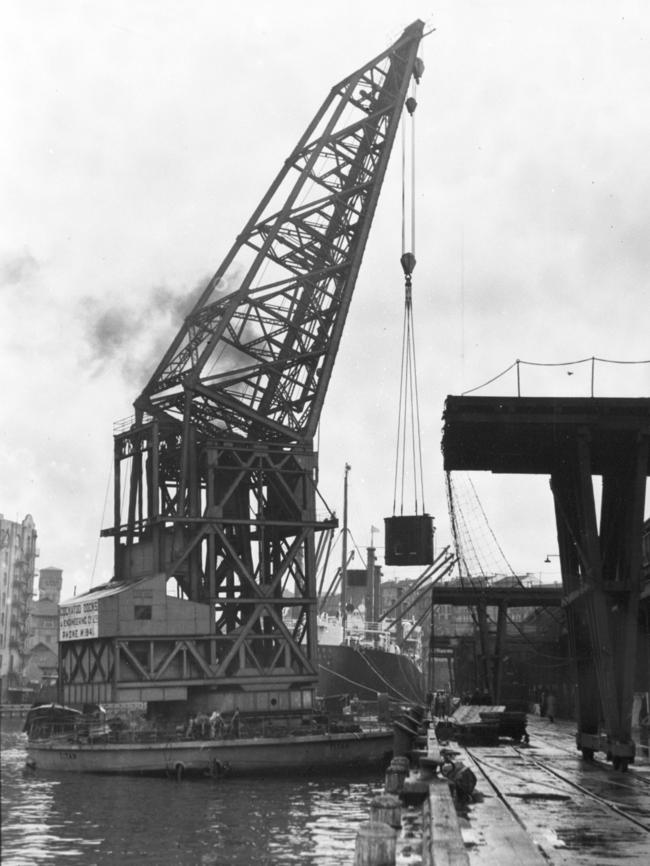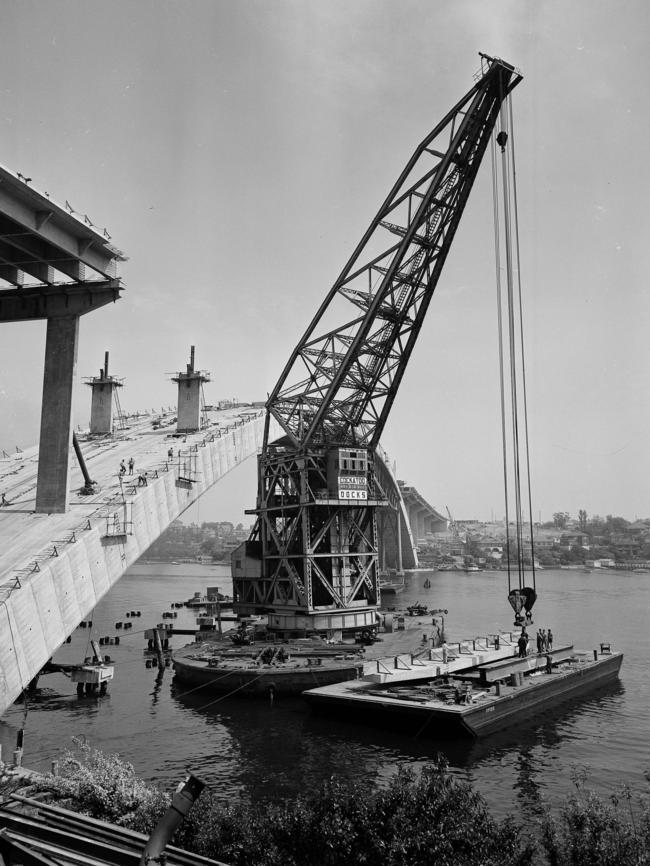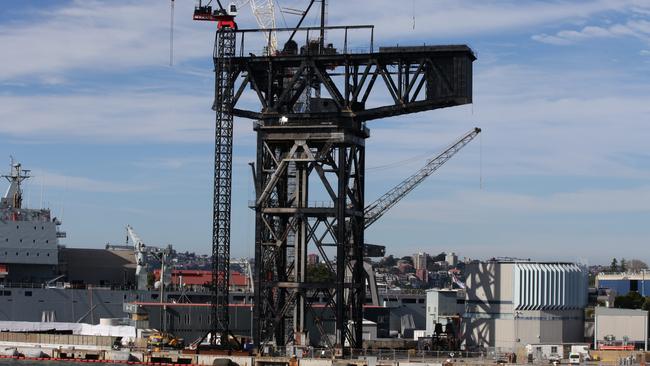Titan was the largest floating crane in the southern hemisphere
MANLY ferry commuters who can remember life before the advent of Facebook will remember Titan, the massive floating crane.

Nth Beaches
Don't miss out on the headlines from Nth Beaches. Followed categories will be added to My News.
- Three died tunnelling sewer from Clontarf to Manly
- Buildings in the bush were just for show
- The master mariner who was a leading light behind the leading line
- Hats all folks, as fashions change at Church Point
MANLY ferry commuters who can remember life before the advent of Facebook will remember Titan, the massive floating crane that dominated the Sydney waterline wherever it was being used.
In fact, for years after it was brought into service, it was said the only taller object on the waterfront was the Sydney Harbour Bridge.
But the life of Titan came to a sad – some would say criminal – end on Christmas Eve, 1992, while it was being towed up the NSW coast en route for Singapore.

The barge on which Titan was mounted in the night overturned and later the barge and the remnants of the crane were scuttled near Camden Head, south of Port Macquarie.
Titan was fabricated in England during World War I and transported to Sydney, where it was assembled at Cockatoo Island Dockyard and launched in December 1917.
But some of the parts for the crane were lost when the merchant ship Afric was torpedoed, so Titan couldn’t operate at full capacity until December 1919, when the missing parts were replaced.
But when Titan was completed and handed over the Royal Australian Navy, it was the largest floating crane in the southern hemisphere.
Titan could lift 150 tons at a radius of 27m and 125 tons at a radius of 38m, and had a maximum reach of 58m.
The crane’s derrick, or arm, was supported by a lattice mast that was fitted to a steel pontoon barge 54m long, 24.3m wide and 4m deep, the whole with a maximum displacement of 2125 tons.
The barge was “dumb”, in that it was not self-propelled, so Titan always needed two or three tugs to be moved around the harbour but its high centre of gravity and poor seakeeping ability made it dangerous to tow across The Sound at the entrance to Port Jackson and in later years it was banned from operating further downstream than Bradleys Head.

Although Titan’s main role in its early years of service was to provide heavy lifting services for Cockatoo Island Dockyard, it was also used in the construction of bridges and other structures around the harbour, including laying the submarine sewer pipes laid under Middle Harbour in 1925 as part of the Northern Suburbs Ocean Outfall Scheme.
In 1934, Titan hoisted the HMAS Sydney Memorial Mast into position on the tip of Bradleys Head.
Titan’s largest lift prior to World War II was of the 145-ton French cargo ship Le Phoque from the keck of the German freighter Stassfurt on October 1938
Titan was also used to salvage vessels from the bottom of the harbour, including the two Japanese midget submarines that were sunk in the harbour in 1942 and was again used when some of those parts were restored at Cockatoo Island in 1987.
During World War II, Titan was in service around the clock in Sydney, which was the main supply and repair base in the south-west Pacific.
Even after the war, Titan was kept busy, although largely on civilian projects, including the construction in the late 1950s of the Spit Bridge.
By the 1960s, however, Titan was showing its age and an upgrade was initiated until the navy decided Titan was surplus to its needs and the floating giant was handed to Cockatoo Island Dockyard in the mid-1970s.

Codock continued to use Titan on a variety of jobs and one of its most public outings was when it raised the ferry Karrabee from the harbour bed after it sank at Circular Quay in January 1984.
Titan was taken out of commercial service in 1990, although occasionally it was used on short-term operating permits.
But when Cockatoo Island Dockyard closed in 1991, the Federal Government decided to dispose of Titan and it was sold in 1992 to a New Zealand company on condition that heritage items were removed.
The NZ company wanted to restore Titan but in late 1992 it was sold to a Singapore company.
Despite the provisions of the Protection of Moveable Cultural Heritage Act, permission to move Titan to Singapore was granted on condition it be returned by July 1995.

On December 22, 1992, Titan was towed stern-first out of the harbour but about 11pm on December 24, the barge on which Titan was mounted turned turtle near Smoky Cape and the jib broke away from the mast.
The barge was towed back to Camden Head and scuttled.
Historians were outraged by the loss of such a significant item of Sydney’s maritime history and blamed the Federal Government for allowing Titan to be taken out of Sydney.
More recently, Sydney has lost another large piece of its maritime history – the giant hammerhead crane at Garden Island – which was built beside the Fitting Out Wharf between 1944 and 1951 and had a lifting capacity of 250 tons.
At the time it was built, the hammerhead crane was the largest in the southern hemisphere and in 2005 was still the largest in Australia.
But age took its toll on the hammerhead crane too and its use ceased in 1996 and in 2014 it was demolished.


